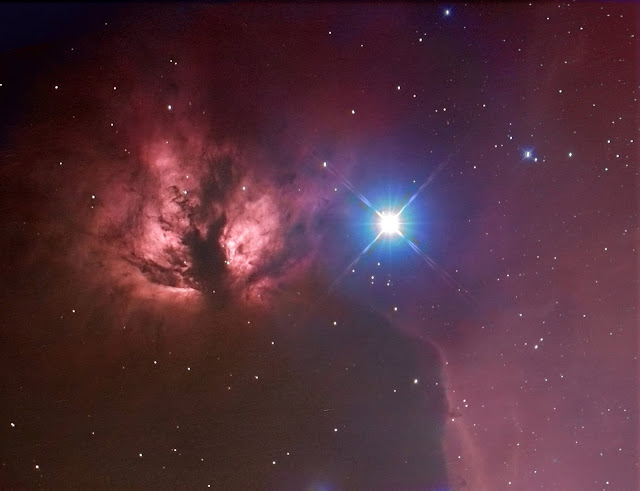Within the constellation of Orion theHunter lies the Flame nebula next to the bright star Alnitak at a
distance of about 1,200 light years. The sky conditions on this particular evening was very poor with mist, fog and heavy light pollution to contend with. Stars was only visable down to about magnitude 3.5 so only narrow band imaging was posable. I was using my ten inch F4.8 reflector, an Atik 383L mono CCD camera and PHD auto guiding . I captured five minute sub frames with matching dark frames and combined them with flat field frames to reduce the effect of vignetting in the final image. In one of the images I used some old RGB colour data and combined it with new narrow band luminance data. The total exposure times was 60 minutes using a H Alpha filter, 30 minutes using a S11 filter and 30 minutes using an O111 filter. The colour data using the narrow band filters was H Alpha for green ,S11 for red and O111 for the blue, [ the Hubble palette ].
RGB
Narrowband
Narrowband + RGB












